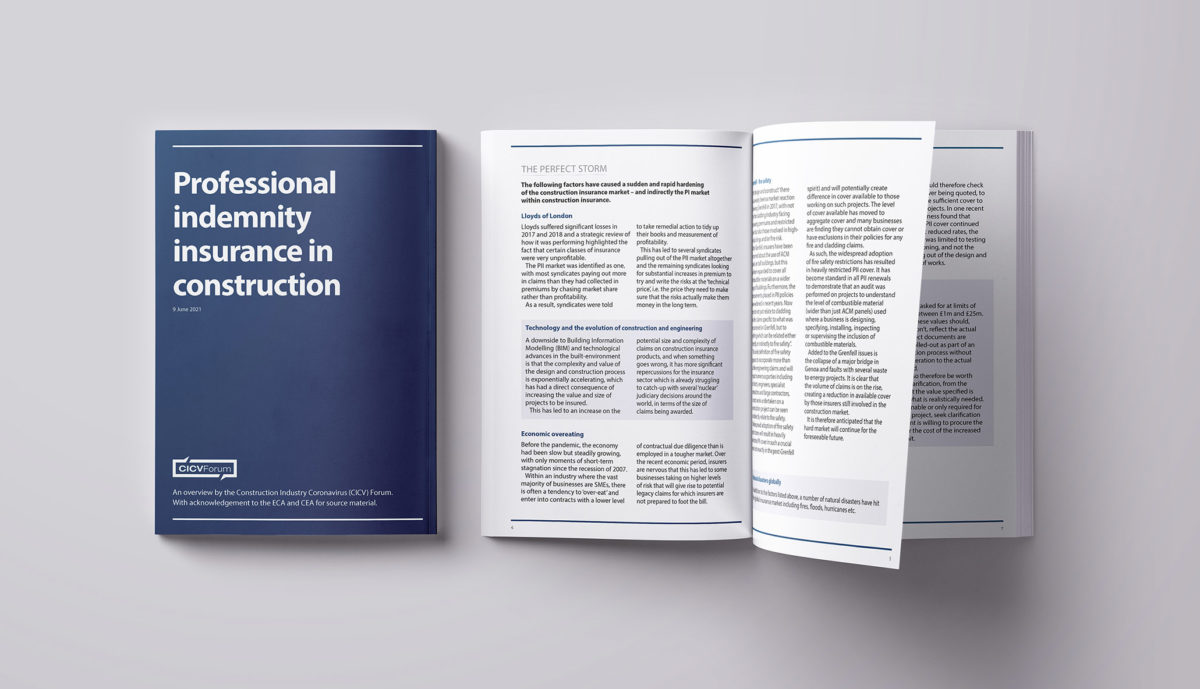
THE Construction Industry Coronavirus (CICV) Forum has published a new guide on the issue of professional indemnity insurance (PII).
The downloadable document outlines the current state of the insurance market, the precautions firms should take and the potential pitfalls they face.
The free guide warns that over the last 18 months, a variety of reasons have seen the cost of PII increase ‘hugely’ while businesses have often suffered reductions in the scope of cover.
The document offers advice on subjects such as extending liability, contractual liability, the nature of PII cover, insurance limits, obligations under ancillary documents, and risk management.
Alan Wilson, CICV Forum chair and MD of trade association SELECT, said, “PII is a necessary tool for protecting business owners who provide a service or give advice if a client claims a service is inadequate. Until the past few years, the construction insurance market has been soft, in that there has been plenty of capacity leading to broad coverage and premium reductions driven by competing insurers.
“The market has now become very hard with the consequence that premium rates have increased, cover has been restricted and, indeed, several insurers have left the market altogether.”
Len Bunton, construction consultant and co-chair of the Forum’s pipeline and commercial sub-group, added, “The issue of PII appears to be a potentially massive problem for the industry. This guide therefore outlines the nature and likelihood of liability and looks at how businesses can manage their risks by identifying them, evaluating their impact and taking steps to control them. It offers advice on negotiating with insurers and stresses that full disclosure of risk is vital, despite the onus placed on underwriters by the Insurance Act of 2015 to ask the relevant questions of a business.
“Demonstrating that you have a solid risk management culture, robust financial resources and controls, as well as providing insurers with proof and documentation of risk mitigation, internal practices, cashflow and profit margins, will all help lower premiums.”









